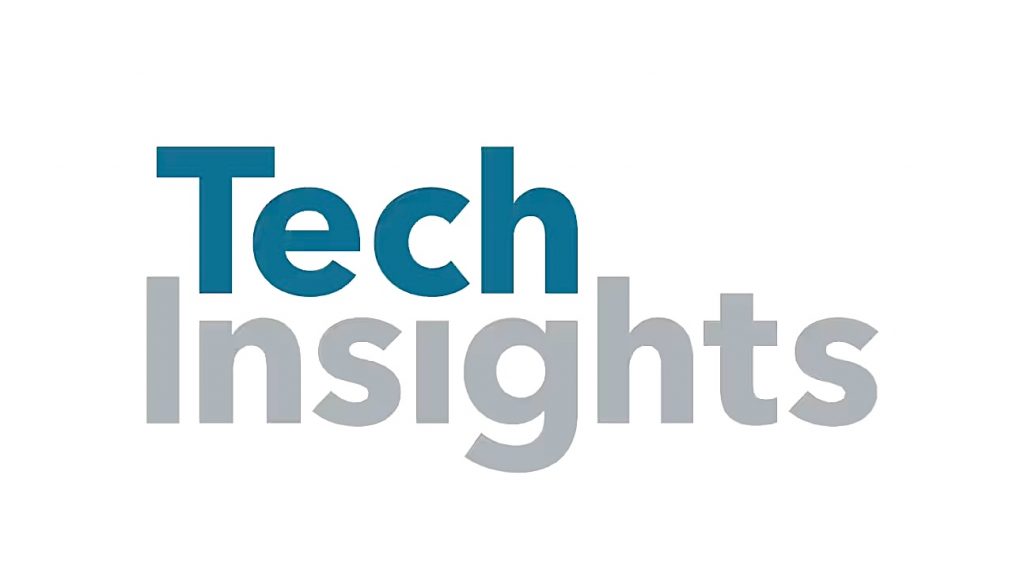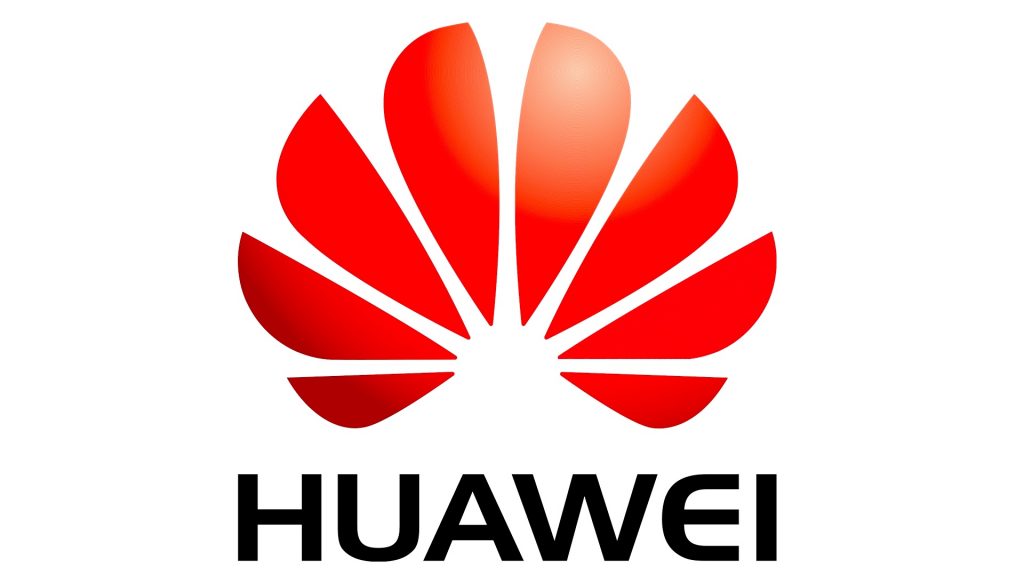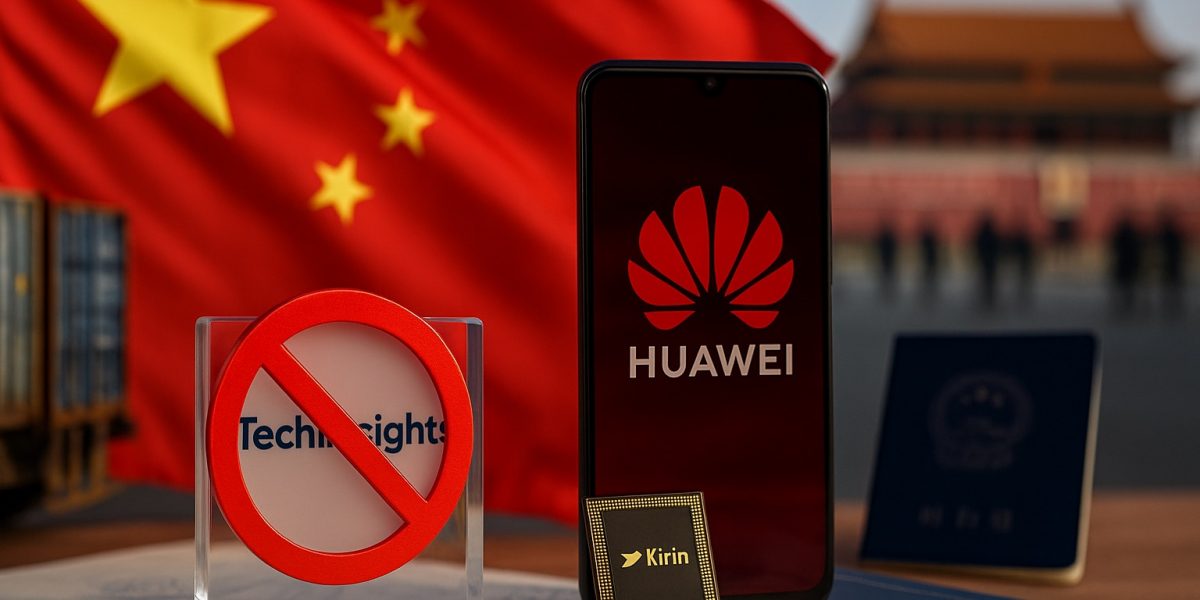China placed Canadian research company TechInsights on its unreliable entities list Thursday, effectively barring the teardown specialist from conducting business in the country after its investigations repeatedly documented how Huawei circumvents American sanctions through elaborate supply chain arrangements.
The Commerce Ministry statement represents Beijing’s most direct retaliation against independent analysis undermining China’s narrative of technological self-reliance. TechInsights now joins thirteen other foreign organizations, including defense contractors and drone manufacturers, facing extensive restrictions prohibiting Chinese entities from sharing data or conducting business with the firm.

Teardown Analysis Exposed Foreign Component Dependencies
TechInsights drew Beijing’s ire through meticulous teardown analyses demonstrating Huawei’s continued reliance on advanced foreign components despite years of US export controls. Most recently, the Ottawa-based company published findings showing Huawei’s flagship Ascend 910C AI processors contain critical components from Taiwan Semiconductor Manufacturing Co. (TSMC), Samsung Electronics, and SK Hynix.
The investigations revealed that core dies underlying Huawei’s third-generation AI accelerators were manufactured by TSMC, while Samsung and SK Hynix supplied high-bandwidth memory modules essential for AI processing. These discoveries contradicted assumptions that China’s Semiconductor Manufacturing International Corp. was producing cutting-edge chips for Huawei.
Since 2023, TechInsights has played a pivotal role uncovering previously unknown suppliers and components in high-profile Chinese devices. A Bloomberg investigation conducted in partnership with the company identified Huawei’s development of a China-manufactured smartphone processor capable of competing with Qualcomm and Apple chips.
Strategic Implications in Technology Conflict
The blacklisting reflects China’s broader strategy to control information that could undermine its technological independence narrative while deterring further foreign scrutiny. The Chinese ministry accused TechInsights and other sanctioned entities of “military-technical cooperation with Taiwan” and “assisting foreign governments in suppressing Chinese enterprises.”
Huawei has operated under US export restrictions since 2019, when the Trump administration first added the company to the Entity List. Restrictions expanded in 2024 to include AI accelerators and high-bandwidth memory modules—measures targeting Beijing’s access to advanced artificial intelligence systems.
Despite these controls, research indicates Huawei obtained approximately 2.9 million TSMC dies through intermediary companies, with stockpiles projected to sustain Ascend 910C production through 2025. The US Commerce Department warned that using Huawei’s Ascend processors anywhere globally violates export control laws and could trigger criminal liability.
Sanctions extend beyond TechInsights’ Canadian headquarters to its subsidiaries in Japan, Korea, and Europe, plus subsidiary Strategy Analytics. Other notable additions to the unreliable entities list include London-based defense company BAE Systems, reflecting the expanding scope of China’s countermeasures in the ongoing technology conflict.

Information Warfare Through Supply Chain Transparency
TechInsights’ ban illuminates a fascinating dynamic in modern technological competition: detailed component analysis has become a geopolitical weapon. The company’s core business—purchasing products on the open market, carefully disassembling them, identifying every component, and publishing findings—operates entirely within legal bounds. Yet this transparency directly challenges state narratives about technological capabilities and independence.
Beijing’s response reveals discomfort with independent verification of Chinese technology development. If Huawei genuinely achieved breakthrough capabilities using purely domestic components and manufacturing, such analysis would validate rather than threaten Chinese technological progress claims. The aggressive reaction suggests findings struck closer to uncomfortable truths than Beijing wants acknowledged publicly.
The teardown methodology TechInsights employs is straightforward but painstaking. Technicians use specialized equipment to delayer chips without damaging them, photograph die structures, measure geometries, and compare results against known manufacturing processes to identify origins. This forensic approach provides evidence courts and regulators can evaluate, unlike speculative assessments based on performance characteristics alone.
Huawei’s ability to source TSMC chips through intermediaries despite export controls demonstrates sophisticated procurement networks. Shell companies, jurisdictional arbitrage, and component relabeling all contribute to sanctions evasion schemes. TechInsights’ work doesn’t just identify individual instances—it maps systematic patterns showing how sanctioned companies maintain access to restricted technologies.
The 2.9 million TSMC dies represent substantial volume, not isolated purchases. Producing that quantity requires sustained relationships with suppliers, logistics networks moving components across borders, and payment mechanisms that obscure ultimate destinations. Each die’s journey from TSMC fabrication facilities to Huawei products involves multiple intermediaries, any of which could theoretically be targeted for enforcement.
US Commerce Department warnings about criminal liability for Ascend processor usage create interesting compliance challenges. Organizations purchasing Huawei equipment might unknowingly violate export controls if those systems contain sanctioned components. This puts enforcement burden on end users rather than just manufacturers, potentially chilling Huawei’s international sales even where no explicit bans exist.
The ban’s extension to TechInsights’ Japanese, Korean, and European subsidiaries plus Strategy Analytics demonstrates China’s willingness to impose extraterritorial consequences. These offices serve regional clients and may have had minimal direct involvement with Chinese operations, yet they’re included in restrictions designed to punish the parent organization’s analytical work.
BAE Systems’ inclusion alongside TechInsights reveals the breadth of entities China now considers adversarial. The London defense contractor’s presence suggests Beijing is expanding its unreliable entities list beyond companies directly challenging Chinese tech narratives to include any organization supporting what it frames as Western containment strategies.
For TechInsights, losing access to Chinese markets creates significant business implications. China represents the world’s largest electronics manufacturing base and a major source of devices for teardown analysis. Inability to legally operate there or source products directly limits the company’s ability to perform the component verification work that made it valuable to clients and regulators.
The broader chilling effect may prove more significant than direct impact on TechInsights. Other research firms and analysts now understand that publishing findings Beijing considers embarrassing or strategically damaging risks similar retaliation. This creates incentives for self-censorship that don’t require explicit threats—the precedent alone influences behavior.
Whether the ban achieves China’s objectives depends on perspective. It punishes TechInsights and may deter some analysis, but it simultaneously validates the importance and accuracy of the company’s work. Organizations don’t typically face this level of retaliation for publishing inaccurate or irrelevant findings. The aggressive response suggests TechInsights hit targets Beijing desperately wanted to keep obscured.




Post a comment